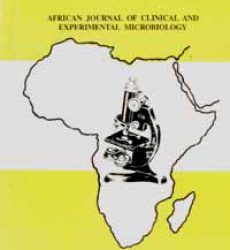Abstract
Malaria is one of the most common diseased conditions in Nigeria and across most developing countries triggered by one of four species of Plasmodium. The objective of this study was to screen and detect for the presence of Plasmodium species via microscopic analysis on Malaria patients attending a healthcare facility Northern Nigeria and present the epidemiological data of malaria.Finger prick blood samples, Thick and Thin Giemsa-stained blood smears, were collected from 350 malaria-suspected individuals representing all age groups. The Giemsa-stained blood smears were examined microscopically. Demographic information on rural and urban dwellings, use of insecticides and mosquito nets were collected using structured questionnaires. Malaria cases were detected in in 227 (64.9%) of the participants with a higher infection rate amongst the males (147) than the females (80). The predominant specie found was Plasmodium falciparum. All age groups in this study were vulnerable in the order of 61-above>31-40>51-60>41-50>1-10>21-30> 11-20 years of age.A large number of participants dwelling in urban area (219) were tested positive for malaria in contrast to eight(8) from the rural area. Not using insecticides and mosquito treated nets were significantly associated with the prevalence of malaria as 59.4% of participants who were tested positive for Plasmodium falciparum infection utilized insecticides, while 66.9% of those who did not were also tested positive. Individuals residing close to gutters and bushes were the most susceptible (85.6%) to Plasmodium infection.
Keywords: Prevalence, Malaria, Plasmodium falciparum, Kano
Download full journal in PDF below

